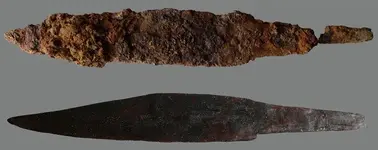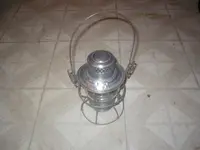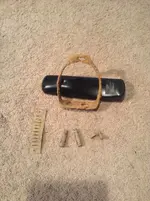Tom_Restorer
Gold Member
artyfacts said:This cabinet blaster comes with everything but compressor and choice of media www.harborfreight.com/abrasive-blast-cabinet-42202.html . Your right, bottom line for siphon blaster cabinet , compressor and media is going to cost you around $275.00 and more when you add on shipping, and Uncle Sam. If your using a self contained bottle blaster or its likes, your still over $200.00. But in the long run you will find many uses for it besides iron it is a great cleaning tool. As far as iron meeting oxygen = iron oxide, rust. I know there's more then one type of iron oxide, I'm only familiar with one. ArtyBuckleBoy said:Tom,
I don't understand. Why wouldn't one want to remove the iron oxide to stop the reaction and decomposition of the metal? I do agree that the micro-blasted spur is much nicer, but in terms of cost, few can afford this equipment for their iron relics.
Is that a find of yours? It is a very nice spur.
Best Wishes,
Buckleboy
... this cabinet is ok but the blaster tool is only to use on car parts or very big iron pieces! The opening on the tip is VERY big and not real the right tool to restore historical objects!
I would like to see how 6 Bar pressure and sand let look a iron piece
 You need something to control the presure - what you will miss on that piece!
You need something to control the presure - what you will miss on that piece!PS: because more than one iron oxyde: You are right but my english is not good enought... I mean the black iron oxyde wich comes directlyy under the rust. This is the layer with all information on it!
Tom









